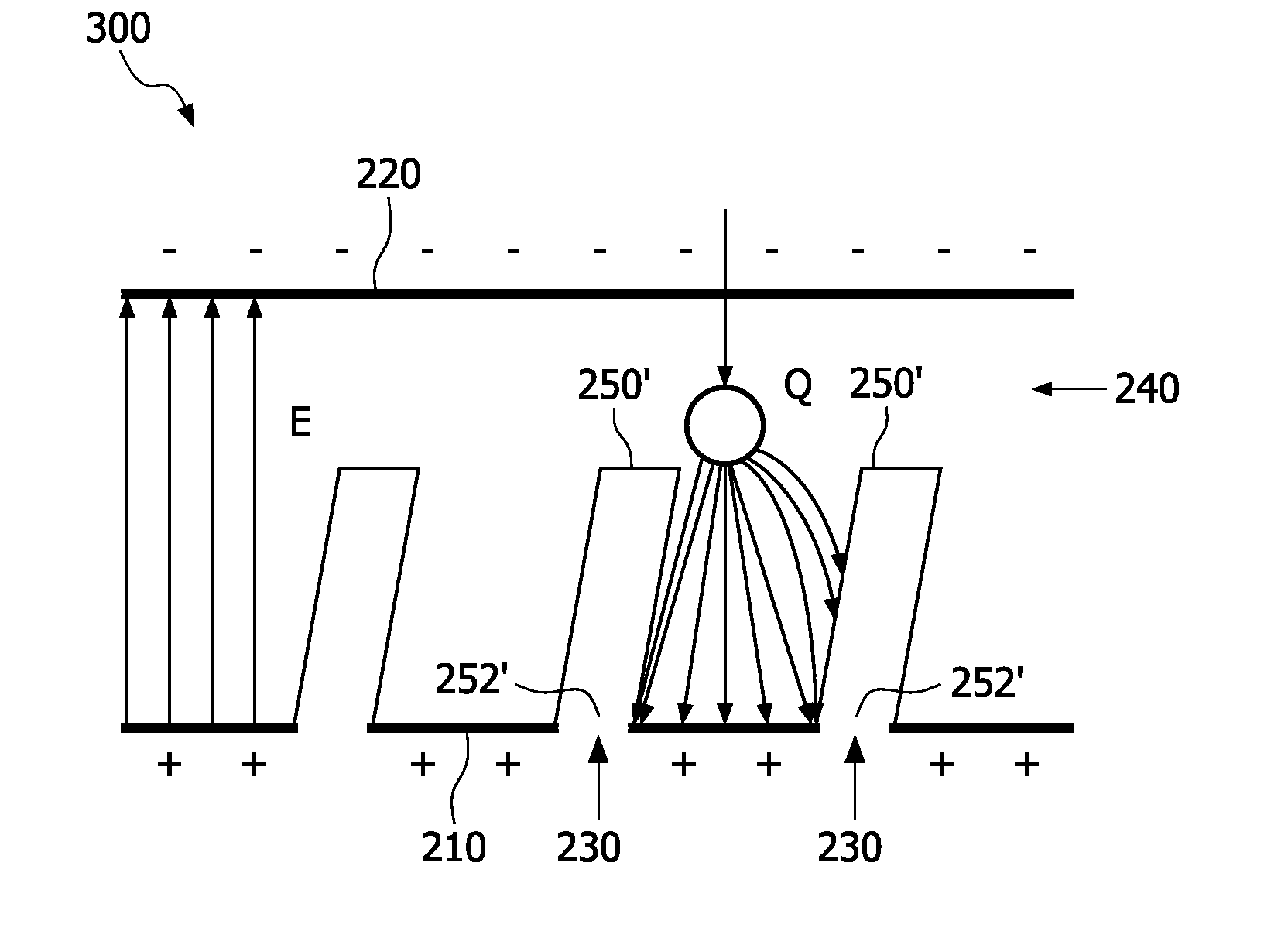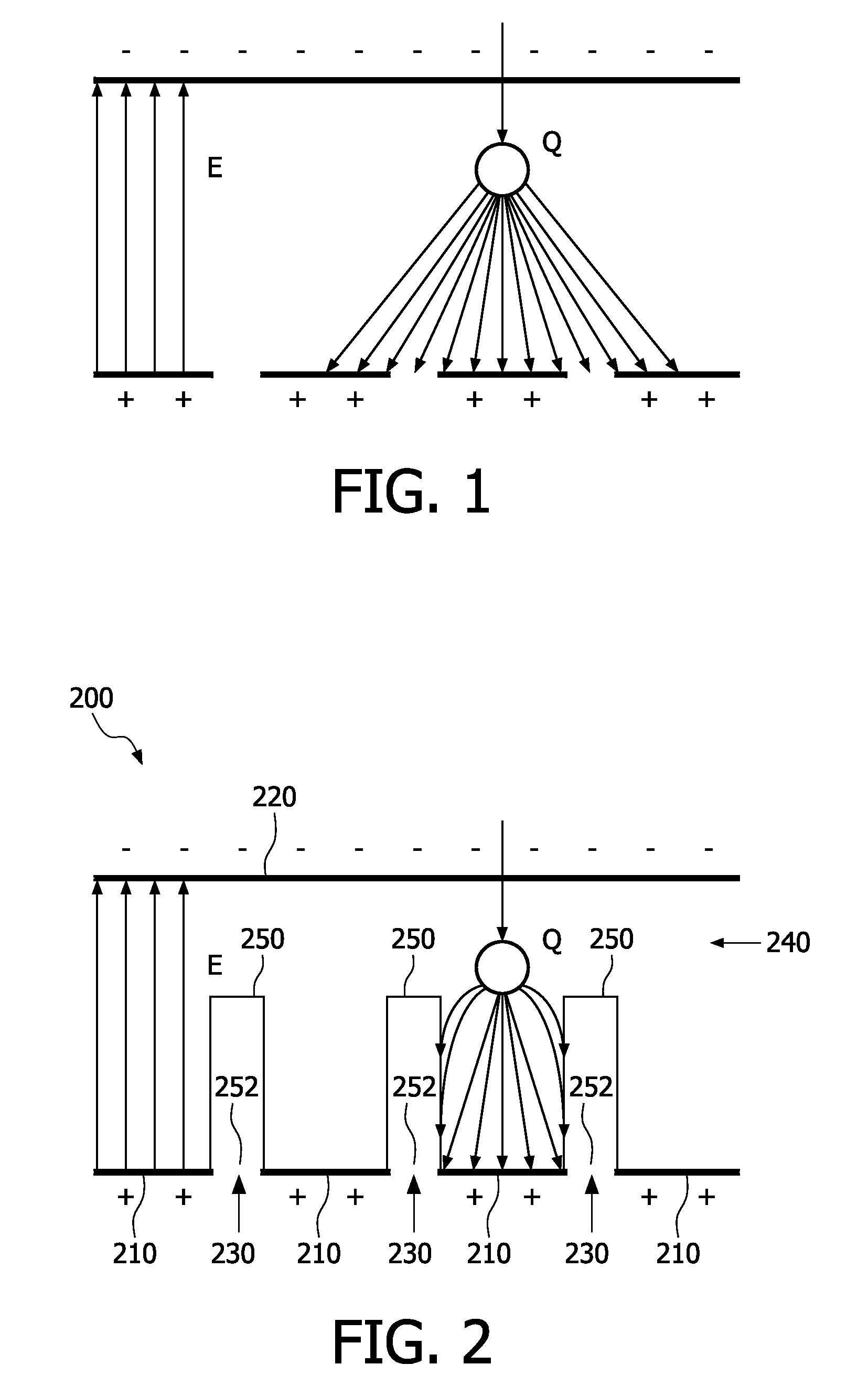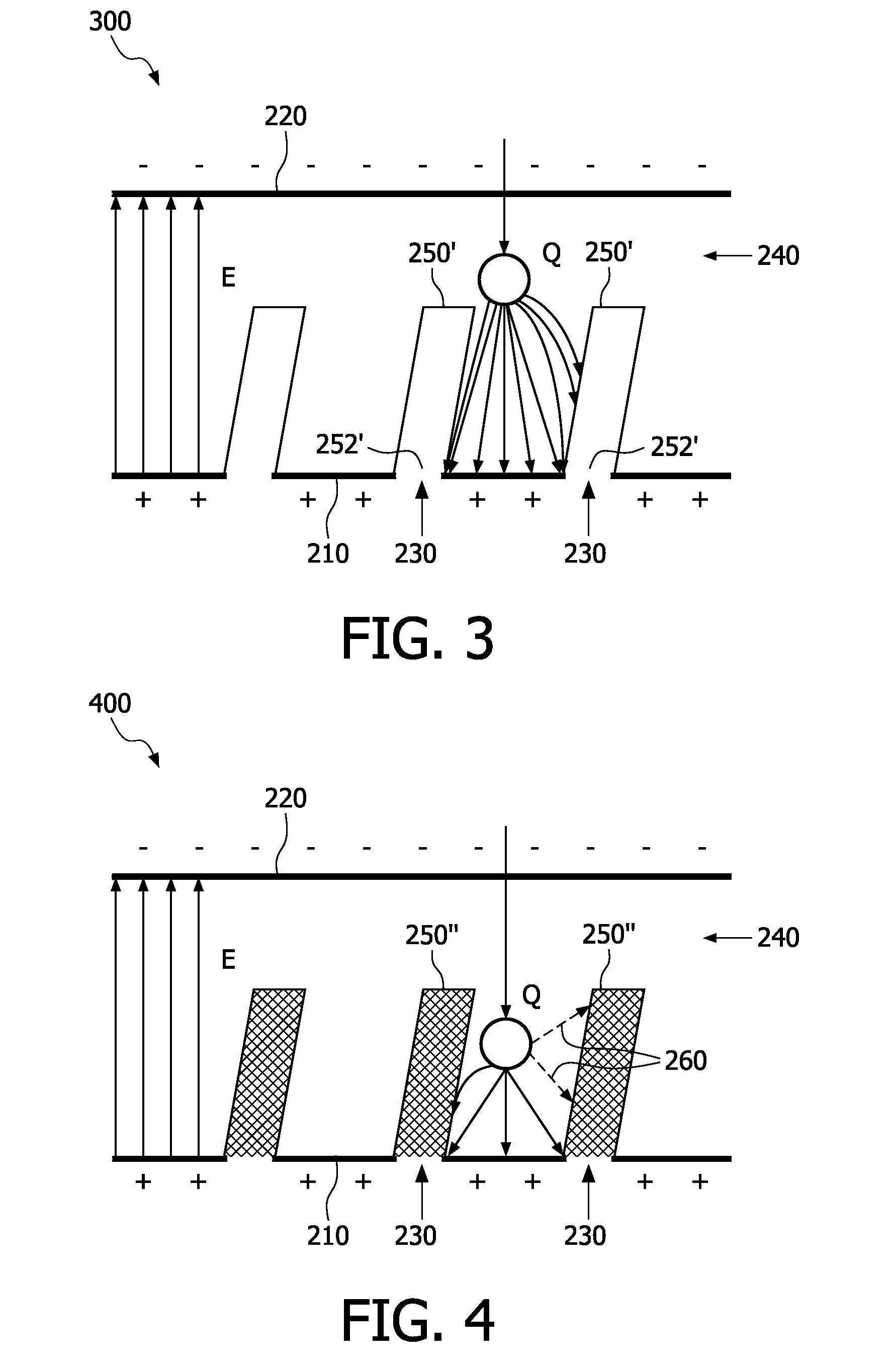Electrical isolation of X-ray semiconductor imager pixels
a semiconductor imager and pixel technology, applied in the field of electromagnetic semiconductor detectors, can solve the problems of limiting the adoption of smaller pixel sizes, affecting the spectral resolution and count rate performance of detectors, so as to improve the count rate performance of semiconductor detectors, k-escape, and mitigate the negative effect of charge sharing on spectral resolution and count rate performan
- Summary
- Abstract
- Description
- Claims
- Application Information
AI Technical Summary
Benefits of technology
Problems solved by technology
Method used
Image
Examples
Embodiment Construction
[0017]An embodiment of a structured semiconductor detector which mitigates or overcomes the drawback of the charge sharing effect in current semiconductor detectors is shown in FIG. 2. The detector 200 comprises a plurality of anodes 210, at least one cathode 220, and a detector cell 240. The anodes and the at least one cathode can be arranged in parallel, or in another configuration. Every two adjacent anodes form an opening 230. From each opening, a groove 250 extends into the detector cell 240, with its direction perpendicular to the plane of the opening 230. Each groove 250 has a first opening 252, which may have the same width as the corresponding opening 230, or which may be larger / smaller than the corresponding opening 230. It can clearly be seen that, due to the existence of grooves, a charge cloud generated by a photon is received by one corresponding anode instead of by two or more adjacent anodes.
[0018]Another embodiment is shown in FIG. 3, in which the direction of exten...
PUM
 Login to View More
Login to View More Abstract
Description
Claims
Application Information
 Login to View More
Login to View More - R&D
- Intellectual Property
- Life Sciences
- Materials
- Tech Scout
- Unparalleled Data Quality
- Higher Quality Content
- 60% Fewer Hallucinations
Browse by: Latest US Patents, China's latest patents, Technical Efficacy Thesaurus, Application Domain, Technology Topic, Popular Technical Reports.
© 2025 PatSnap. All rights reserved.Legal|Privacy policy|Modern Slavery Act Transparency Statement|Sitemap|About US| Contact US: help@patsnap.com



